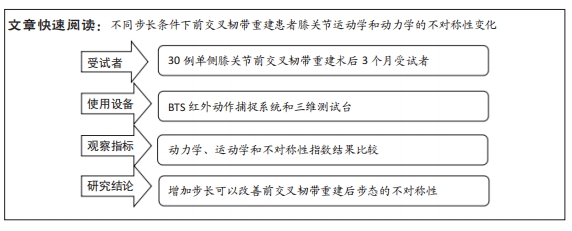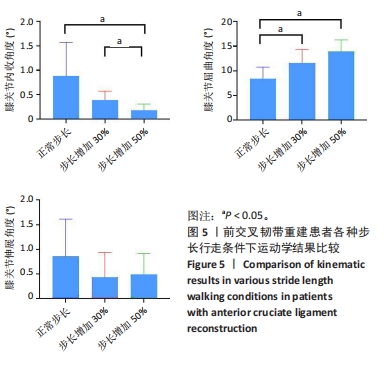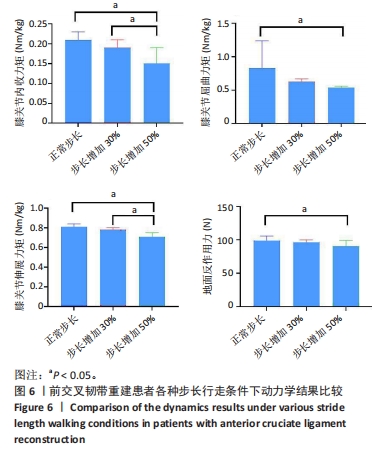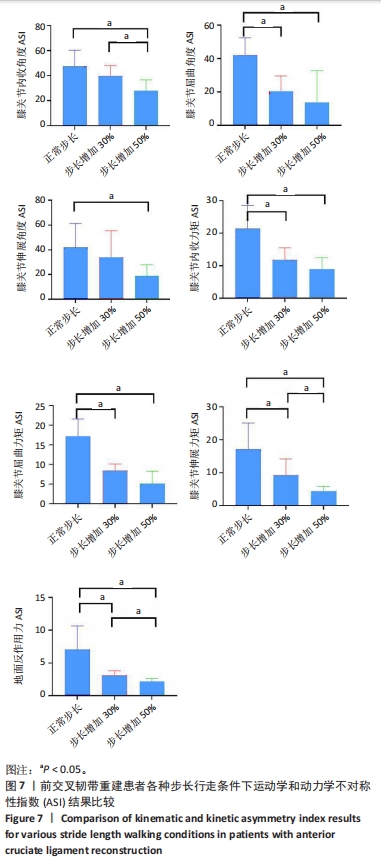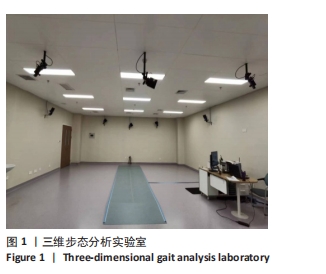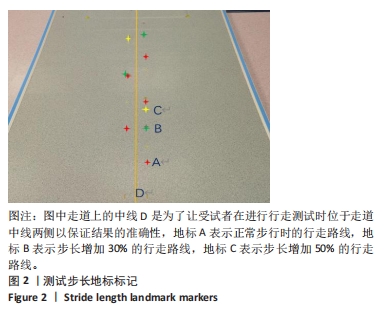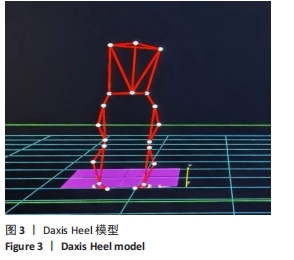[1] KAEDING CC, LÉGER-ST-JEAN B, MAGNUSSEN RA. Epidemiology and Diagnosis of Anterior Cruciate Ligament Injuries. Clin Sports Med. 2017; 36(1):1-8.
[2] 韩广弢,李皓桓,张宇标,等.前交叉韧带损伤的临床特点分析[J].中国医药,2020,15(10):1603-1606.
[3] YU B, GARRETT WE. Mechanisms of non-contact ACL injuries. Br J Sports Med. 2007;41 Suppl 1(Suppl 1):i47-51.
[4] PIETROSIMONE B, SEELEY MK, JOHNSTON C, et al. Walking Ground Reaction Force Post-ACL Reconstruction: Analysis of Time and Symptoms. Med Sci Sports Exerc. 2019;51(2):246-254.
[5] SUTHERLAND K, CLATWORTHY M, FULCHER M, et al. Marked increase in the incidence of anterior cruciate ligament reconstructions in young females in New Zealand. ANZ J Surg. 2019; 89(9):1151-1155.
[6] HERZOG W, NIGG BM, READ LJ, et al. Asymmetries in ground reaction force patterns in normal human gait. Med Sci Sports Exerc. 1989;21(1): 110-114.
[7] FREGLY BJ, REINBOLT JA, CHMIELEWSKI TL. Evaluation of a patient-specific cost function to predict the influence of foot path on the knee adduction torque during gait. Comput Methods Biomech Biomed Engin. 2008;11(1):63-71.
[8] GUPTA D, DONNELLY CJ, REINBOLT JA. Finding Emergent Gait Patterns May Reduce Progression of Knee Osteoarthritis in a Clinically Relevant Time Frame. Life (Basel). 2022;12(7):1050.
[9] WILLY RW, DEVITA P, MEARDON SA, et al. Effects of Load Carriage and Step Length Manipulation on Achilles Tendon and Knee Loads. Mil Med. 2019;184(9-10):e482-e489.
[10] HADIZADEH M, AMRI S, MOHAFEZ H, et al. Gait analysis of national athletes after anterior cruciate ligament reconstruction following three stages of rehabilitation program: Symmetrical perspective. Gait Posture. 2016;48:152-158.
[11] MILANDRI G, POSTHUMUS M, SMALL TJ, et al. Kinematic and kinetic gait deviations in males long after anterior cruciate ligament reconstruction. Clin Biomech (Bristol, Avon). 2017;49:78-84.
[12] KNOBEL RJ, ITO N, ARHOS EK, et al. Patients Walking Faster After Anterior Cruciate Ligament Reconstruction Have More Gait Asymmetry. Int J Sports Phys Ther. 2021;16(1):169-176.
[13] 陆逸群,吴悦,刘振龙,等.前交叉韧带断裂及重建术后步态生物力学特征研究现状[J]. 北京大学学报,2024,60(2):377-392.
[14] 李永杰,付申宇,夏渊,等. 膝骨关节炎女性伸膝肌力、步态时空参数与峰值膝关节屈曲/内收力矩关系[J]. 中国组织工程研究, 2024,28(9):1354-1358.
[15] 李香平,舒彬,顾小红,等.中国正常成人步行时空参数分析[J]. 中国康复医学杂志,2012,27(3):227-230.
[16] ROBINSON ROP, HERZOG W, NGG MB. Use of force platform variables to quantify the effects of chiropractic manipulation on gait symmetry. J Manipulative Physiol Ther. 1987;10(4):172-176.
[17] SLOVÁK L, ZAHRADNÍK D, LAND WM, et al. Response of Knee Joint Biomechanics to Landing Under Internal and External Focus of Attention in Female Volleyball Players. Motor Control. 2024;28(3): 341-361.
[18] 刘卉,苏玉林,于冰. 非接触性前交叉韧带损伤特点及机制的研究进展[J]. 医用生物力学,2008,23(3):240-247.
[19] 张晶晶,安丙辰,郑洁皎. 足前进角改善膝骨关节炎症状及其机制的研究进展[J]. 中国康复理论与实践,2015,21(7):790-792.
[20] WALTER JP, D’LIMA DD, COLWELL CW JR, et al. Decreased knee adduction moment does not guarantee decreased medial contact force during gait. J Orthop Res. 2010;28(10):1348-1354.
[21] 徐立国, 杨自兵, 徐杰, 等. 前交叉韧带损伤后膝关节内侧间室有和无创伤后骨关节炎患者的髋关节生物力学研究[J]. 中国现代药物应用,2022,16(9):13-16.
[22] ALLEN JL, KAUTZ SA, NEPTUNE RR. Step length asymmetry is representative of compensatory mechanisms used in post-stroke hemiparetic walking. Gait Posture. 2011;33(4):538-543.
[23] JUDGE JO, DAVIS RB 3RD, OUNPUU S. Step length reductions in advanced age: the role of ankle and hip kinetics. J Gerontol A Biol Sci Med Sci. 1996;51(6):M303-312.
[24] BUURKE T, DEN OTTER R. The relationship between the anteroposterior and mediolateral margins of stability in able-bodied human walking. Gait Posture. 2021;90:80-85.
[25] FISHER H, STEPHENSON ML, GRAVES KK, et al. Relationship Between Force Production During Isometric Squats and Knee Flexion Angles During Landing. J Strength Cond Res. 2016;30(6): 1670-1679.
[26] SCHROEDER LE, TATARSKI RL, WEINHANDL JT. Increased Ankle Range of Motion Reduces Knee Loads During Landing in Healthy Adults. J Appl Biomech. 2021;37(4):333-342.
[27] PODRAZA JT, WHITE SC. Effect of knee flexion angle on ground reaction forces, knee moments and muscle co-contraction during an impact-like deceleration landing: implications for the non-contact mechanism of ACL injury. Knee. 2010;17(4):291-295.
[28] DAVIES WT, RYU JH, GRAHAM-SMITH P, et al. Stronger Subjects Select a Movement Pattern That May Reduce Anterior Cruciate Ligament Loading During Cutting. J Strength Cond Res. 2022;36(7):1853-1859.
[29] LAM WK, LEE KK, PARK SK, et al. Understanding the impact loading characteristics of a badminton lunge among badminton players. PLoS One. 2018;13(10):e0205800.
[30] UNO Y, OGASAWARA I, KONDA S, et al. Effect of the foot-strike pattern on the sagittal plane knee kinetics and kinematics during the early phase of cutting movements. J Biomech. 2022;136:111056.
[31] BAKKER R, TOMESCU S, BRENNEMAN E, et al. Effect of sagittal plane mechanics on ACL strain during jump landing. J Orthop Res. 2016; 34(9):1636-1644.
[32] JEONG J, CHOI DH, SHIN CS. Influence of individual quadriceps and hamstrings muscle architecture and quality on knee adduction and flexion moment in gait. Sci Rep. 2023;13(1):20683.
[33] ROSTEIUS T, JETTKANT B, BRINKEMPER A, et al. Long-term follow up of extensor tendon ruptures of the knee using electromyography and three-dimensional gait analysis. Knee. 2021;29:251-261.
[34] 张美珍, 刘卉, 李翰君, 等. 侧切和急停起跳对篮球运动员前交叉韧带运动生物力学特征的影响[J]. 北京体育大学学报,2015,38(4): 65-70.
[35] 刘海涛. 膝关节前交叉韧带损伤的生物力学机制研究进展[J]. 山西青年,2018(12):208.
[36] HOLLIS JM, PEARSALL AW 4TH, NICIFOROS PG. Change in meniscal strain with anterior cruciate ligament injury and after reconstruction. Am J Sports Med. 2000;28(5):700-704.
[37] SHARIFI M, SHIRAZI-ADL A. Knee flexion angle and muscle activations control the stability of an anterior cruciate ligament deficient joint in gait. J Biomech. 2021;117:110258.
[38] SHARIFI M, SHIRAZI-ADL A, MAROUANE H. Sensitivity of the knee joint response, muscle forces and stability to variations in gait kinematics-kinetics. J Biomech. 2020;99:109472.
[39] LI G, DEFRATE LE, RUBASH HE, et al. In vivo kinematics of the ACL during weight-bearing knee flexion. J Orthop Res. 2005;23(2):340-344.
[40] MUNSCH AE, EVANS-PICKETT A, DAVIS-WILSON H, et al. Quadriceps Muscle Action and Association With Knee Joint Biomechanics in Individuals with Anterior Cruciate Ligament Reconstruction. J Appl Biomech. 2022;38(5):328-335.
[41] HERZOG W, READ LJ. Lines of action and moment arms of the major force-carrying structures crossing the human knee joint. J Anat. 1993; 182(Pt 2): 213-230.
[42] NEAL K, WILLIAMS JR, ALFAYYADH A, et al. Knee joint biomechanics during gait improve from 3 to 6 months after anterior cruciate ligament reconstruction. J Orthop Res. 2022;40(9):2025-2038.
[43] TROY BLACKBURN J, DEWIG DR, JOHNSTON CD. Time course of the effects of vibration on quadriceps function in individuals with anterior cruciate ligament reconstruction. J Electromyogr Kinesiol. 2021;56: 102508.
[44] ITO N, CAPIN JJ, KHANDHA A, et al. Identifying Gait Pathology after ACL Reconstruction Using Temporal Characteristics of Kinetics and Electromyography. Med Sci Sports Exerc. 2022;54(6):923-930.
[45] MYER GD, FORD KR, KHOURY J, et al. Biomechanics laboratory-based prediction algorithm to identify female athletes with high knee loads that increase risk of ACL injury. Br J Sports Med. 2011;45(4):245-252.
[46] BEAULIEU ML, ASHTON-MILLER JA, WOJTYS EM. Loading mechanisms of the anterior cruciate ligament. Sports Biomech. 2023;22(1):1-29.
|
